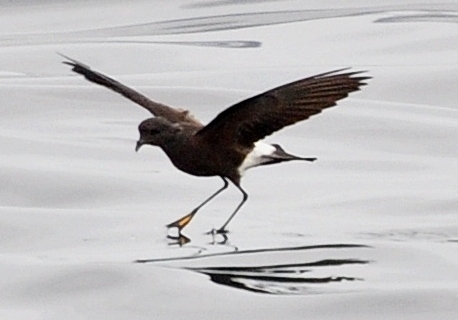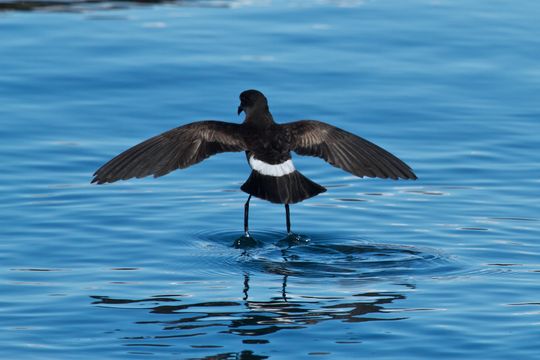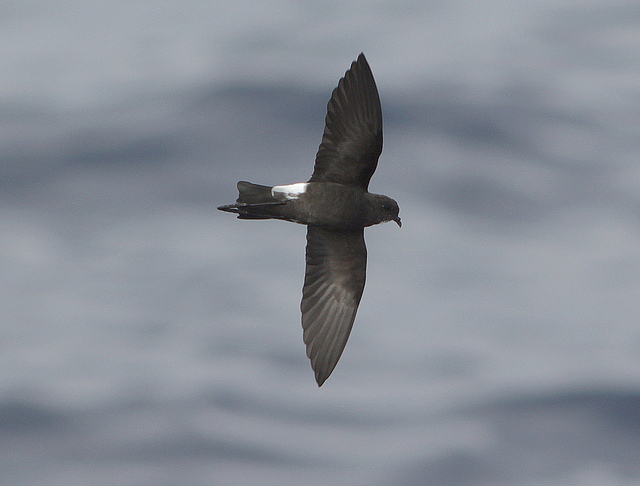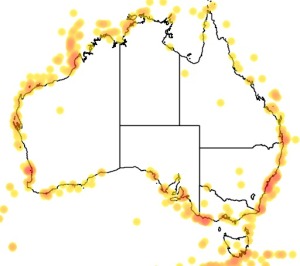
©Nanda ramesh: Wilson's Storm-petrel (Oceanites oceanicus) noting the distinctive yellow foot webbing
Colours
Distinguishing features
Wilson's Storm Petrel is a small bird. It is slightly larger than the European Storm Petrel and is essentially dark brown in all plumages, except for the white rump and flanks. The feet jut beyond the square ended tail in flight. The European Storm Petrel has a very distinct whitish lining to the underwing and a nearly all dark upperwing. Wilson's Storm Petrel has a diffuse pale band along the upper wing coverts and lacks the distinctive white underwing lining. The webbing between the toes is yellow with black spots in pre-breeding age individuals. (Wikipedia)
Size
- From 15 cm to 19 cm (Length of specimen) - applies to Adults
Wingspan
- From 38 cm to 42 cm - applies to Adults
Synonyms
Distribution
Distribution and habitat preferences
This species breeds on the Antarctic coastlines and nearby islands such as the South Shetland Islands during the summer of the southern hemisphere. It spends the rest of the year at sea, and moves into the northern oceans in the southern hemisphere's winter. It is much more common in the north Atlantic than the Pacific. Wilson's Storm Petrel is common off eastern North America in the northern summer and the seasonal abundance of this bird in suitable European waters has been revealed through pelagic boat trips, most notably in the area of the Isles of Scilly, Great Britain.
It is strictly pelagic outside the breeding season, and this, together with its remote breeding sites, makes Wilson's Petrel a difficult bird to see from land. Only in severe storms might this species be pushed into headlands. (Wikipedia)
Behaviour
Wilson's Storm Petrel has a more direct gliding flight than other small petrels, and like most others it flies low over the seas surface and has the habit of pattering on the water surface as it picks planktonic food items from the ocean surface. Their unique fluttering and hovering flight is achieved often with their wings held high. Even in calm weather, they can make use of the slight breeze produced by the waves and in effect soar while using their feet to stabilize themselves. (Wikipedia)
Diet
They feed predominantly on planktonic invertebrates close to the surface, rarely plunging below the surface to capture prey. They may however sometimes take 3–8 cm long fish in the family Myctophidae. (Wikipedia)


